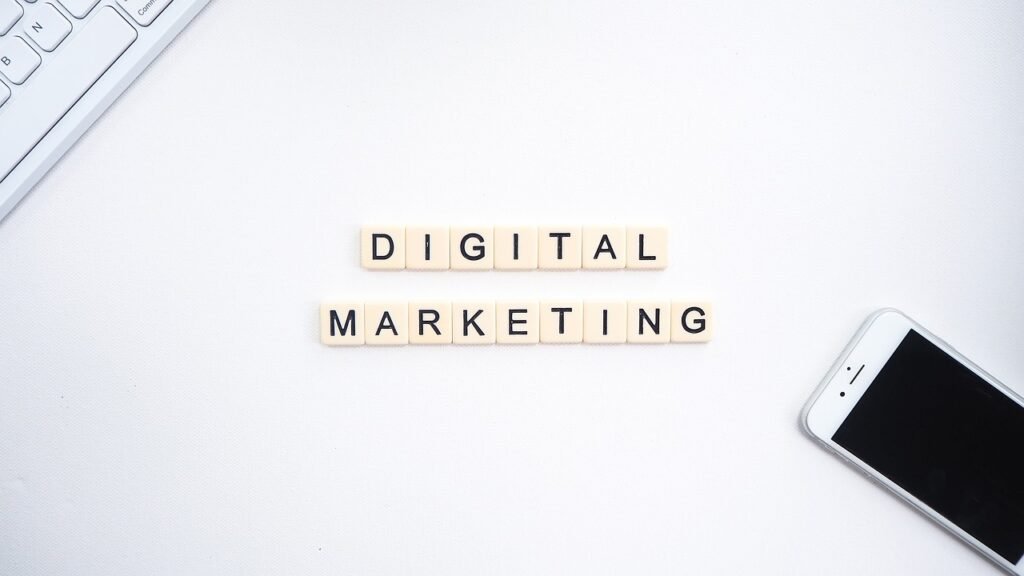Marketing cars effectively requires a strategic blend of creativity, data analysis, and customer understanding. The automotive industry is highly competitive, and standing out demands a comprehensive approach. This guide will provide actionable and tactical strategies to help you market cars successfully, attract potential buyers, and build a loyal customer base.
Understanding Your Market
Conduct Thorough Market Research
Market research is the backbone of understanding your market. Start by gathering data on your potential customers and industry trends. Use a combination of primary research (surveys, focus groups, interviews) and secondary research (industry reports, market analysis).
Tools like SurveyMonkey for surveys and Statista for industry data can provide valuable insights. Analyze this data to identify patterns, preferences, and emerging trends. This will help you make informed decisions about product offerings, pricing, and marketing strategies.
Segment Your Audience
Audience segmentation allows you to tailor your marketing efforts to different groups of potential buyers. Divide your audience based on demographics (age, gender, income), psychographics (lifestyle, values, interests), and behavior (buying patterns, brand loyalty).
For example, a segment of young professionals might be interested in affordable, stylish cars with the latest tech features, while another segment of environmentally conscious consumers might prioritize hybrid or electric vehicles. Creating detailed buyer personas for each segment can guide your marketing strategies and ensure they resonate with each group.
Assess Geographic Markets
Understanding geographic markets is crucial, especially if you operate in multiple regions. Analyze the specific needs and preferences of customers in different areas. Urban customers might prefer compact, fuel-efficient cars due to parking constraints and heavy traffic, while rural customers might favor larger, more rugged vehicles for off-road capabilities.
Customize your marketing messages and promotional efforts to align with regional preferences and conditions. Geographic targeting can also be applied in digital advertising to ensure your ads reach the right audience in specific locations.
Analyze Economic Factors
Economic conditions greatly influence consumer buying behavior. Monitor key economic indicators such as employment rates, disposable income levels, and consumer confidence indexes. Understanding these factors helps you anticipate market demand and adjust your marketing strategies accordingly.
For instance, during economic downturns, highlighting the affordability and fuel efficiency of your cars can appeal to budget-conscious buyers. Conversely, in a strong economy, you might emphasize luxury features and advanced technology to attract buyers looking for premium options.
Track Technological Advancements
The automotive industry is constantly evolving with new technologies. Stay informed about the latest technological advancements and how they affect consumer preferences. Features like autonomous driving, electric powertrains, and advanced infotainment systems are becoming increasingly popular.
Highlighting these cutting-edge technologies in your marketing can attract tech-savvy customers. Additionally, understanding technological trends helps you anticipate future market demands and innovate your product offerings to stay ahead of the competition.
Evaluate Social and Cultural Trends
Social and cultural trends can have a significant impact on car buying behavior. For example, the growing awareness of environmental issues has increased demand for eco-friendly vehicles. Similarly, the rise of remote work might change preferences towards comfortable, tech-enabled cars suitable for work commutes and leisure travel.
Stay attuned to these trends by following relevant news sources, industry publications, and social media discussions. Adapt your marketing messages to reflect these trends and connect with your audience on a deeper, more relevant level.
Understand Regulatory and Environmental Factors
Regulatory changes and environmental considerations can influence the automotive market. Keep abreast of government regulations regarding emissions standards, safety requirements, and incentives for electric vehicles. These factors can affect consumer preferences and purchasing decisions.
For instance, promoting cars that meet stringent emission standards or qualify for tax incentives can attract environmentally conscious buyers and those looking to save on purchase costs. Understanding regulatory environments helps you align your product offerings with market demands and legal requirements.
Leverage Competitive Analysis
A thorough competitive analysis provides insights into what your competitors are doing and how you can differentiate yourself. Identify your main competitors and evaluate their strengths, weaknesses, opportunities, and threats (SWOT analysis).
Look at their marketing strategies, product features, pricing models, and customer feedback. Use tools like SWOT analysis to identify gaps in the market and areas where you can offer superior value. For example, if competitors are not focusing on customer service, this could be a niche where you excel and attract more customers.
Implement Data-Driven Decision Making
Utilize data analytics to inform your marketing decisions. Collect data from various sources such as sales records, customer feedback, website analytics, and social media interactions. Analyze this data to identify trends, measure the effectiveness of marketing campaigns, and understand customer preferences.
Tools like Google Analytics, CRM software, and social media analytics platforms can provide valuable insights. Data-driven decision making ensures that your marketing strategies are based on actual performance metrics rather than assumptions, leading to more effective outcomes.
Foster Customer Relationships
Building strong relationships with your customers is crucial for long-term success. Engage with your customers through personalized communications, loyalty programs, and exceptional customer service. Collect feedback regularly and use it to improve your products and services.
Satisfied customers are more likely to become repeat buyers and brand advocates who recommend your cars to others. Foster a community around your brand by hosting events, creating online forums, and actively engaging with customers on social media.
Building a Strong Brand

Develop a Distinctive Brand Personality
A strong brand personality makes your car business relatable and memorable. Define the key attributes that embody your brand. Are you luxurious and sophisticated, or are you practical and eco-friendly? Use these attributes to shape your brand’s voice, imagery, and overall customer experience.
Consistently applying this personality across all touchpoints helps create a cohesive and distinctive brand image. For example, if your brand emphasizes innovation, highlight cutting-edge technologies in your marketing materials and adopt a sleek, modern design aesthetic.
Design a Compelling Brand Logo and Visual Identity
Your brand’s visual identity, including your logo, color scheme, and typography, should convey the essence of your brand. Invest in professional design to create a logo that is simple, recognizable, and versatile.
Your visual identity should be consistent across all platforms, from your website and social media profiles to your dealership and advertising materials. Consistent and visually appealing branding helps build recognition and trust with your audience.
Craft an Authentic Brand Story
An authentic brand story can create an emotional connection with your customers. Share the journey of your car business, including your mission, values, and the inspiration behind your vehicles.
Highlight any unique aspects, such as a commitment to sustainability, a history of innovation, or a focus on customer satisfaction. Use storytelling to illustrate how your brand has grown and evolved. An authentic brand story can differentiate you from competitors and make your brand more relatable.
Engage in Purpose-Driven Marketing
Align your brand with a purpose that resonates with your target audience. Purpose-driven marketing involves supporting causes that reflect your brand’s values and engaging in socially responsible activities.
For example, if your brand focuses on sustainability, participate in environmental initiatives, support green energy projects, or implement eco-friendly practices in your operations. Communicate these efforts through your marketing channels to build a positive brand image and attract like-minded customers.
Build Brand Loyalty Through Customer Experience
Providing an exceptional customer experience is crucial for building brand loyalty. From the first point of contact to post-purchase support, ensure that every interaction reflects your brand’s commitment to quality and customer satisfaction.
Train your staff to be knowledgeable, friendly, and responsive. Implement customer feedback systems to continuously improve your services. A positive customer experience can lead to repeat business and strong word-of-mouth referrals, enhancing your brand’s reputation.
Utilize Content Marketing to Reinforce Brand Values
Content marketing is a powerful tool for reinforcing your brand values and educating your audience. Create high-quality content that aligns with your brand’s mission and resonates with your target audience. This could include blog posts, videos, infographics, and social media updates that highlight your brand’s commitment to innovation, sustainability, or luxury.
Share stories about your manufacturing process, behind-the-scenes looks at your design team, or customer success stories. Consistently publishing valuable content builds authority and keeps your brand top of mind.
Foster a Community Around Your Brand
Building a community around your brand can enhance customer loyalty and engagement. Create online forums, social media groups, or exclusive membership programs where customers can connect with each other and your brand. Host events such as car meets, driving experiences, or workshops to bring your community together.
Encourage user-generated content by creating branded hashtags and showcasing customer photos and testimonials. A strong community fosters a sense of belonging and makes your brand more relatable.
Leverage Partnerships and Collaborations
Collaborating with complementary brands can expand your reach and enhance your brand image. Identify brands that share your values and target a similar audience. Partner with these brands for joint marketing campaigns, co-branded products, or special events.
For example, a luxury car brand might collaborate with a high-end fashion label for a co-branded event or limited-edition accessories. Strategic partnerships can introduce your brand to new customers and create exciting opportunities for cross-promotion.
Monitor and Adapt Your Brand Strategy
Building a strong brand is an ongoing process that requires regular monitoring and adaptation. Use brand tracking tools to measure key metrics such as brand awareness, perception, and loyalty. Collect customer feedback through surveys, reviews, and social media interactions.
Analyze this data to identify strengths and areas for improvement. Stay informed about industry trends and competitor activities to keep your brand relevant. Be willing to adapt your brand strategy based on insights and changing market conditions to ensure long-term success.
Implement a Consistent Brand Message
Consistency is key to building a strong brand. Ensure that your brand message is clear, concise, and consistently applied across all marketing channels. Whether it’s your website, social media, advertising, or customer interactions, your brand message should reflect your core values and unique selling points.
Train your team to communicate this message effectively and consistently. A unified brand message reinforces your identity and helps build trust with your audience.
Leveraging Digital Marketing
Create a Comprehensive Digital Marketing Strategy
To effectively market cars online, you need a comprehensive digital marketing strategy that integrates various channels and tactics. Start by defining your goals, such as increasing website traffic, generating leads, or boosting sales. Outline the key performance indicators (KPIs) you will use to measure success.
Develop a content calendar that includes blog posts, social media updates, email campaigns, and video content. Regularly review and adjust your strategy based on performance data and market trends to ensure continuous improvement and alignment with your business objectives.
Use Advanced SEO Techniques
Beyond basic SEO practices, leverage advanced techniques to further enhance your online visibility. Implement local SEO strategies to target customers in your geographic area. Optimize your Google My Business profile with accurate information, high-quality photos, and regular updates.
Use structured data markup (schema) to help search engines understand your content better and improve your chances of appearing in rich snippets. Conduct regular SEO audits to identify and fix issues that could affect your rankings. Investing in advanced SEO ensures your car dealership remains competitive in search engine results.
Leverage Pay-Per-Click (PPC) Advertising
PPC advertising, such as Google Ads and Bing Ads, allows you to target specific keywords and demographics, driving highly relevant traffic to your website. Create targeted ad campaigns based on your audience’s search behavior. Use keyword research tools to identify high-intent keywords related to car buying.
Optimize your ad copy to highlight unique selling points and include compelling calls to action. Implement A/B testing to refine your ads and improve click-through rates (CTR) and conversion rates. Monitor your campaigns closely and adjust bids and budgets to maximize ROI.
Utilize Social Media Advertising
Social media platforms offer powerful advertising options that can help you reach a broader audience. Use Facebook Ads, Instagram Ads, and LinkedIn Ads to promote your car listings and brand. Create visually appealing ad creatives that showcase the features and benefits of your cars.
Use targeting options to reach specific demographics, interests, and behaviors. Experiment with different ad formats, such as carousel ads, video ads, and lead generation forms, to see what resonates best with your audience. Track your ad performance and optimize your campaigns based on engagement and conversion data.
Develop a Robust Content Marketing Plan
Content marketing is essential for building trust and authority in the automotive industry. Create a content marketing plan that includes a mix of educational, entertaining, and promotional content. Write blog posts about car maintenance tips, industry news, and buying guides.
Produce videos that highlight car features, customer testimonials, and dealership events. Use infographics to present complex information in an easily digestible format. Share your content across your website, social media, and email campaigns to reach a wider audience and drive engagement.
Implement Retargeting Campaigns
Retargeting campaigns help you stay top-of-mind with potential buyers who have visited your website but haven’t yet converted. Use retargeting pixels to track visitors and show them relevant ads as they browse other websites or social media platforms.
Create personalized retargeting ads that remind them of the cars they viewed and offer incentives such as special discounts or limited-time offers. Retargeting can significantly increase conversion rates by re-engaging interested prospects and encouraging them to return to your website.

Related: Check out our free tools:

Optimize for Mobile Users
With the increasing use of smartphones, optimizing your digital marketing efforts for mobile users is crucial. Ensure your website is mobile-friendly with a responsive design that adjusts to different screen sizes. Improve mobile site speed to reduce bounce rates and enhance user experience.
Create mobile-optimized ads and landing pages that are easy to navigate and encourage conversions. Use mobile-specific features, such as click-to-call buttons and location-based targeting, to provide a seamless experience for mobile users.
Engage with Interactive Content
Interactive content can enhance user engagement and provide a more personalized experience. Create interactive tools such as car configurators, payment calculators, and virtual test drives.
Use quizzes and polls to engage your audience and gather valuable insights about their preferences and needs. Interactive content not only attracts attention but also encourages users to spend more time on your website, increasing the likelihood of conversion.
Harness the Power of Influencer Marketing
Collaborating with influencers can amplify your digital marketing efforts and reach a wider audience. Identify influencers in the automotive, lifestyle, and tech niches who have a strong following and align with your brand values.
Partner with them to create authentic content that showcases your cars, such as reviews, unboxings, and driving experiences. Influencer endorsements can build trust and credibility, attract new customers, and drive traffic to your website.
Monitor and Analyze Performance Metrics
Regularly monitoring and analyzing performance metrics is essential for optimizing your digital marketing efforts. Use tools like Google Analytics, social media insights, and PPC dashboards to track key metrics such as website traffic, bounce rates, conversion rates, and ROI.
Identify which channels and campaigns are driving the most success and which areas need improvement. Use data-driven insights to refine your strategies, allocate budgets effectively, and achieve better results.
Incorporate Customer Reviews and Testimonials
Customer reviews and testimonials are powerful tools for building trust and credibility. Encourage satisfied customers to leave reviews on your website, social media profiles, and review platforms like Yelp and Google My Business.
Highlight these positive reviews on your website and in your marketing materials. Respond to reviews, both positive and negative, to show that you value customer feedback and are committed to providing excellent service. Authentic reviews can influence potential buyers and drive conversions.
Leveraging Digital Marketing
Engage Through Email Marketing
Email marketing is an effective way to nurture leads and maintain relationships with potential and existing customers. Build an email list through your website and social media channels by offering incentives such as exclusive discounts or a free car maintenance guide.
Send regular newsletters featuring new arrivals, special promotions, and informative content about car maintenance and industry trends. Personalize your emails based on customer preferences and behaviors to increase engagement and conversion rates.
Invest in Paid Advertising
Paid advertising can give your marketing efforts an immediate boost. Use platforms like Google Ads and social media advertising to target potential buyers based on demographics, interests, and online behaviors. Create compelling ad copy and visuals that highlight the unique features and benefits of your cars.
Experiment with different ad formats, such as display ads, video ads, and retargeting ads, to see what works best for your audience. Monitor your ad performance and adjust your strategy based on the results.
Leverage Video Marketing
Videos are highly engaging and can effectively showcase the features and benefits of your cars. Create high-quality videos that provide virtual tours of your vehicles, demonstrate advanced features, and share customer testimonials.
Post these videos on your website, YouTube channel, and social media platforms. Live videos and webinars can also be used to launch new models, host Q&A sessions, and provide expert advice on car maintenance and buying tips.
Utilize Online Reviews and Testimonials
Positive reviews and testimonials build trust and credibility. Encourage satisfied customers to leave reviews on your website, Google, and other review platforms. Showcase these reviews on your website and social media channels.
Respond to reviews, both positive and negative, to show that you value customer feedback and are committed to providing excellent service. A strong online reputation can significantly influence potential buyers’ decisions.
Enhancing Customer Experience
Personalize the Buying Experience
Personalization can significantly enhance the customer experience and make buyers feel valued. Use customer data to tailor interactions and recommendations. For example, if a customer has shown interest in a specific car model, send them personalized emails with detailed information, special offers, or test drive invitations.
Utilize CRM systems to track customer preferences and interactions, allowing your sales team to provide a customized experience at every touchpoint. Personalization fosters a deeper connection with your customers and can drive higher conversion rates.
Streamline the Online to Offline Transition
Many car buyers start their journey online and finish it in the dealership. Ensure that the transition from your website to your physical showroom is seamless. Allow customers to schedule test drives, apply for financing, or chat with sales representatives directly through your website.
Provide all necessary information online, such as inventory availability and pricing, to avoid surprises during the in-person visit. This integrated approach makes the buying process more convenient and builds trust with your customers.
Enhance In-Store Experience
The in-store experience should be as impressive as the online one. Train your sales staff to be knowledgeable, approachable, and responsive to customer needs. Create a welcoming environment with comfortable seating, refreshments, and engaging displays.
Use digital tools like tablets or interactive kiosks to provide additional information and keep customers engaged while they wait. Offering a memorable in-store experience can set your dealership apart from competitors and encourage positive word-of-mouth referrals.
Offer Transparent Pricing and Financing Options
Transparency in pricing and financing builds trust with your customers. Provide clear, detailed information about the cost of the vehicle, including any additional fees or charges. Offer a variety of financing options and explain them in simple terms to help customers make informed decisions.
Use online calculators to allow customers to estimate monthly payments and understand their financing options before visiting the dealership. Transparency reduces anxiety and enhances the overall buying experience.
Implement a Hassle-Free Test Drive Process
The test drive is a crucial part of the car buying journey. Make it easy for customers to schedule test drives online or over the phone. Offer flexible scheduling options and allow customers to test drive multiple models.
During the test drive, encourage customers to experience the car’s features and address any questions or concerns they might have. Follow up promptly after the test drive to gather feedback and provide additional information. A hassle-free test drive process can increase the likelihood of a sale.
Provide Post-Purchase Support
The customer experience shouldn’t end after the purchase. Offer excellent post-purchase support to build long-term relationships with your customers. Provide a comprehensive orientation about the car’s features and maintenance requirements when they take delivery.
Follow up with customers after a few weeks to ensure they are satisfied with their purchase and address any issues. Send reminders for service appointments and offer special deals on maintenance services. Exceptional post-purchase support can lead to repeat business and referrals.
Utilize Customer Feedback for Continuous Improvement
Actively seek and utilize customer feedback to improve your services. Encourage customers to leave reviews and complete satisfaction surveys. Analyze this feedback to identify common pain points and areas for improvement.
Implement changes based on customer suggestions and communicate these improvements to your audience. Demonstrating that you value customer feedback and are committed to continuous improvement can enhance your reputation and build customer loyalty.
Create Loyalty Programs
Loyalty programs can encourage repeat business and foster long-term relationships with your customers. Offer rewards such as discounts on future purchases, free maintenance services, or exclusive access to events. Promote your loyalty program through your website, social media, and email campaigns.
Track customer participation and tailor rewards to their preferences to maximize engagement. A well-structured loyalty program can increase customer retention and drive long-term growth.
Leverage Technology for Enhanced Customer Interaction
Leverage technology to enhance customer interaction and streamline processes. Implement chatbots on your website to provide instant answers to common questions and guide visitors through the buying process. Use virtual reality (VR) or augmented reality (AR) tools to offer virtual tours of your cars and showroom.
Provide mobile apps that allow customers to manage their car maintenance schedules, receive reminders, and access exclusive offers. Technology can make interactions more efficient and engaging, improving the overall customer experience.
Host Customer Appreciation Events

Hosting customer appreciation events can strengthen your relationship with existing customers and attract new ones. Organize events such as car care workshops, exclusive previews of new models, or social gatherings.
Use these events to show gratitude for your customers’ support and provide valuable information or entertainment. Promote these events through your marketing channels and encourage customers to bring friends and family. Customer appreciation events create a sense of community and reinforce loyalty to your brand.
Train Your Team for Consistent Service Excellence
Consistency in service quality is key to enhancing customer experience. Invest in regular training for your sales and support teams to ensure they are up-to-date with the latest product knowledge, customer service techniques, and industry trends.
Develop standard operating procedures (SOPs) for common customer interactions to ensure consistency. Regularly review performance and provide feedback to help your team improve. A well-trained team can deliver exceptional service consistently, enhancing the overall customer experience.
Conclusion
In conclusion, marketing cars effectively requires a multifaceted approach that combines understanding the target market, leveraging digital tools, creating compelling content, and maintaining a consistent brand message. A deep comprehension of customer needs and preferences is essential for tailoring marketing strategies that resonate with potential buyers. Utilizing digital platforms, including social media, search engine optimization, and email marketing, allows for a broad and targeted reach.
Crafting engaging and informative content that highlights the unique features and benefits of the vehicles can capture interest and build trust. Consistency in branding across all marketing channels reinforces the brand’s identity and values, fostering loyalty and recognition. By integrating these elements, car marketers can create impactful campaigns that not only attract customers but also drive sales and foster long-term brand loyalty.
Read Next:





















